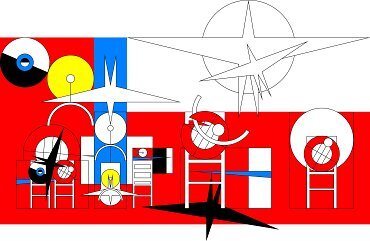Happy ending for Orpheus and Eurydice at the Bargello Museum

The National Museum of the Bargello in Florence hosts until October 11 the exhibition "The Ascent of Orpheus: Between and Beyond Representation and Abstraction", which contains the works of the American artist Adi Da Samraj. It is the first time at the Bargello for a contemporary artist, presenting his works drawn from suites Orpheus One and Linead One (2007) in the two galleries that overlook the courtyard.
Died in 2008, in over forty years, Adi Da has explored new forms of digital technology combining it with fluid traits and creating complex and sophisticated graphics. Samraj has created an artistic body consisting of drawings, paintings, sculptures, and a large and pioneering photographic, videographic and digitally composed production. Since 2000, he incorporated his works in suites that collect figurative or abstract images.
The theme of the exhibition is a retelling of the myth of Orpheus and Eurydice in which, contrary to what was told by the myth, the young Orpheus can lead Euridice out of the underworld. For these works, the artist used primary colors. Orpheus is represented by the blue, while Eurydice is associated to red and yellow (representing the dark realm of suffering).The two move together toward a white light cycling along the underworld.
On display at the Bargello, nine large panels and multimedia projections present a hero who, from the world of light, descends into the darkness to bring back his beloved. A victorious ascent that becomes the central theme of the two suites in which the antique communicates with digital images, creating a huge visual impact.
The works, some on display here for the first time, represent the end of a research project that investigates the process of creating forms using methods of historical avantgarde. The American artist exceeds the classical perspective and choose an a-perspective that eliminates distances and fills them with color. He also chooses the abstraction that counterpoise on one hand the "Geomes", the primary geometries of squares, circles and triangles; and on the other hand the "Lineads", lines freely sketched by hand. The result is a content placed in that mysterious and significant space of the "between and over representation and abstraction."











